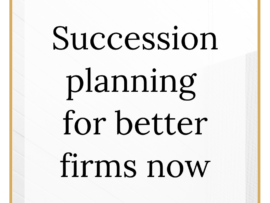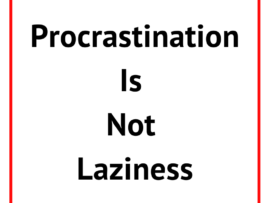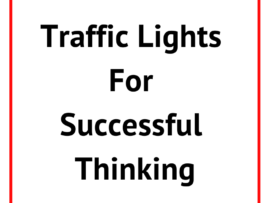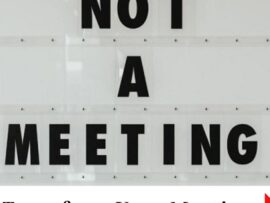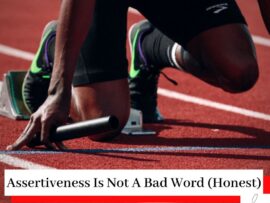Goals that keep getting stuck & how to complete them
0 CommentsAre your goals/tasks stuck, stopped, or on repeat with stopping and starting?
Do you have a goal you aren’t getting very far with?
When coaching (clients, or self-coaching) to reach a goal, or complete a project. I tend to look at five things:
- Skills & confidence to complete the task or tasks
- Pain of not doing the task/achieving the goal
- Pain of completing the task/achieving the goal
- Actions not being completed & limiting beliefs
- Celebrating achievements
Breaking this down further (and they don’t necessarily need to be looked at in this order):
-
Skills & confidence
Do we have sufficient knowledge and understanding to complete the tasks/goals. Do we need to learn anything, and if so, what is the best way to do that? This is also where we may notice how confident we feel. We want to understand if with greater knowledge, habits, and putting it into practice, confidence will follow. Or if less confidence is part of a wider picture.
-
The pain of not doing the task/achieving the goal
Whilst we are motivated towards pleasure, we need to be aware that this alone may not get us to the end. We can still use pleasure (reminding ourselves of all the reasons why we want to do this – creating a list is a great starting point), in combination with the feel-good factor of succeeding (see below), when completing tasks along the way.
However, since we are typically more motivated to move away from pain, rather than towards pleasure. When it comes to tougher, or long term goals, we may want to focus more on the pain. First, I am talking about the pain of not doing what you say you want to do.
Think about exercise. We often want to get fit, to feel good and perhaps to look good. Maybe have more energy. We focus on the pleasure of what that will bring us. However, it does not always work. We keep promising ourselves action, and nothing happens. Until one day we catch ourselves trying to keep up, or notice how out of breath we are, and say enough is enough. We hit a high enough ‘pain level’ that means we act.
A good way to boost your pain level, for motivation, is to make a list of your pain points. Think about all of the reasons why, not doing anything, could be painful for you. You can then come back to this (and your pleasure list) when it gets tough (and boring is still tough!).
-
The pain of doing the task/achieving the goal
As mentioned above, to buy into our goals. We do want to associate as much pleasure with the outcome as possible. Why we want to do the hard work.
This step is common, when people start their new year goals, this is what we typically write out.
However, one area that people often miss out, is what I call ‘flipping it over’. Thinking about all the reasons you don’t want it. This is about exploring the pain points of either completing the tasks/actions along the way to the goal, or achieving the goal itself (the latter may seem a bit strange right now, but stay with me).
Think about a fitness plan. What are the possible pain points in completing the actions along the way? Maybe you don’t want to get up early, be cold, be seen in gym gear, or hate to swim. If it is a work task. Maybe you are worried about how hard it will be, or how boring it will be, perhaps you need to learn a new skill, deal with certain members of your team, or you think it is pointless. The aim is then to decide what you can do about these challenges. It might involve accountability, using different time management methods, changing the approach, finding a new way to do the same thing, or getting help.
Likewise, we may have pain associated with achieving our goals. For fitness, perhaps you worry that with the end goal, people might start commenting on your physique positively or negatively, will be jealous and critical, you will have to buy new clothes, or will have to say no to friends to keep your fitness levels up. With work, perhaps you are worried about people criticising your presentation, or that if you are successful with this, you will be given even more work. Perhaps in the back of your mind you worry about people being jealous of your success, or the money you might bring in. Take the time to brainstorm all the reasons, even if they seem silly, as to why you might not want to act, complete the steps, or reach the outcome you are after.
If we completely ignore these pain points, then we cannot be aware of what is stopping us. If we don’t know what is stopping us, we cannot figure out the most elegant solutions to them. To succeed in tougher goals we typically want to enhance our moving away from pain, increase our moving towards pleasure, reduce our doing or achieving pain, and increase accountability. There is one more area. Limiting beliefs can also form part of our pain points and therefore we also want to release those too (see below).
-
Actions not being completed & limiting beliefs
As already touched on, if we are procrastinating, getting stuck, not doing anything at all, or in a stop-start cycle. Then providing this is a goal we want to achieve (versus an internally or externally imposed ‘should do’). This is where we can strengthen our pain/pleasure points. If it less painful not to complete the task/achieve the goal, or we think bad things may happen if we do achieve it. Then we are less likely to do it. Our subconscious mind wants to keep us safe, and feeling bad or scared, feels dangerous.
However, there is one other area, that is crucial. And these are our self-limiting beliefs. Beliefs that make us think, this is not for me, people like me don’t achieve this (identity), this is not possible for me, or others (i.e. people can’t work flexibly and make good money), I cannot do this (I am rubbish at marketing).
One of my favourite quotes is “It is not who you are that holds you back. It is who you think you are not”. So make a note of all the beliefs you have heard and picked up in life, and notice if they are limiting or empowering you. You may even notice they conflict ‘look before you leap’, ‘fortune favours the bold’! If they are limiting beliefs, start to rewrite them to become more empowering and motivating towards the goals you want to achieve. Also look for people who reflect those empowering beliefs, and imagine what they would do, feel, or say, in your circumstances. What can you say you are or are becoming?
-
Celebrating achievements
We often think who we are now, is the same person as who we were last week, last month, last year. We don’t notice how we have changed, or what we have achieved.
However, we stay more motivated if we celebrate our achievements. When we feel good, our mind wants us to do more of the thing, that made us feel good. This helps keep us motivated, especially when it starts to feel tricky. Or we notice our old habits creep in to keep us with what is familiar (safe) even if it is not good for us.
I keep a diary of key achievements, and pats on my back, alongside fun things I have done. I am always surprised by how much I have done when I look back at the end of each month! Maybe this, combined with your gratitude list, could become a useful daily habit.
One final tip. Make sure your goals are broken down into steps. A fitness plan is a project with steps. Likewise, introducing staff appraisals, is a project with steps. Sometimes, what we think of as a task, and berate ourselves for not putting aside the time to complete, is in fact what I might call a project. This can be what makes it feel confusing, or overwhelming, because it needs to be broken down.
If you have been noticing that you have got a bit stuck in completing your tasks, or goals, I hope this helps.
Simona
p.s. if you hate the task but have to do it anyway, read about Eat that frog & other ways to get stuff done!


